Rocket Science
SED 695B; Fall 2005
Using model rockets is rocket science. But it does not have to be difficult to understand or explain. Building and launching model rockets for demonstrating chemical reactions is relatively safe.
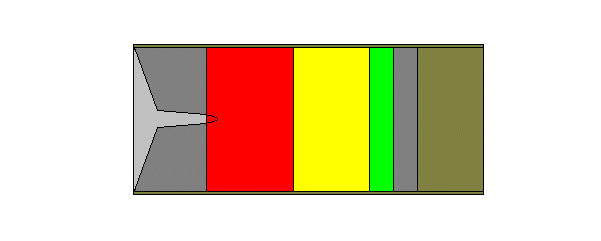 |
Standards addressed:
Physics 5a: Reactant atoms and molecules interact to form products with different chemical properties.
5b: Chemical reactions usually liberate heat or absorb heat.
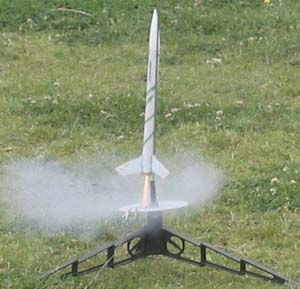
When the controller button is pushed, the electric current heats the igniter wire. The substance called pyrogen on the tip of the wire flares and begins a chemical reaction which starts the propellant burning.
The propellant is called black powder which is composed of charcoal (carbon), sulphur, and potassium nitrate). The potassium nitrate(KNO3) is the oxidizer and the sulphur (S) and carbon (C) are the fuel.
The Chemical Equation is: 2KNO3 + S + 3C = K2S + N2 + 3CO2.
Materials
1. Rocket kit (rocket, launcher, igniters, engine, controller)
2. glue, scissors, tape, cutting knife,
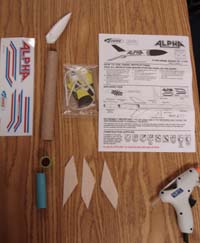
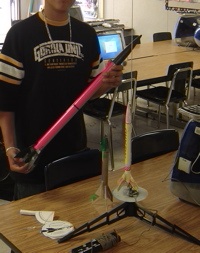
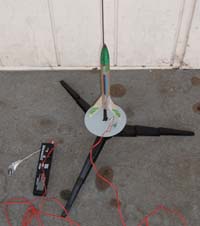
Procedure:
1. Assemble model rocket and rocket launcher.
2. Find a launch site free from dry grass, leaves and away from trees,
power lines, and other obstructions. The field should be as wide as 1/4th
of the expected altitude of the rocket.
3. Place the launch pad in the middle of the field. Place 4 danger cones
around the pad 30 meters from the center. Attach yellow caution tape to
the 4 cones.
4. Install an igniter into the engine.
5. Secure the igniter with a plug
6. Insert the engine into the rocket’s engine mount.
7. Place the rocket on the launch pad.
8. Attach the launch controller clips to the igniter.
9. Be sure students are behind the yellow caution tape.
10. Insert the safety key into the launch controller
11. Announce the countdown… 5,4,3,2,1 and press the button.

Questions:
1. Which rocket engine produces the maximum amount of lift?
2. What is the relationship between the maximum height of a rocket and its engine rating?
3. How accurate is the rated engine efficiency?
Safety Precautions
1. Contact your local fire department to obtain the proper permits. Each city may have their own requirements and restrictions for launching model rockets.
2. Choose a site free of power cables, trees, tall buildings, etc. The PE. field, or a large parking lot work well.
3. Launch only in safe weather conditions (winds no greater than 20 mph, no clouds, etc).
4. Watch for airplanes before launching.
5. Students should stand no less than 15 feet from the rocket.
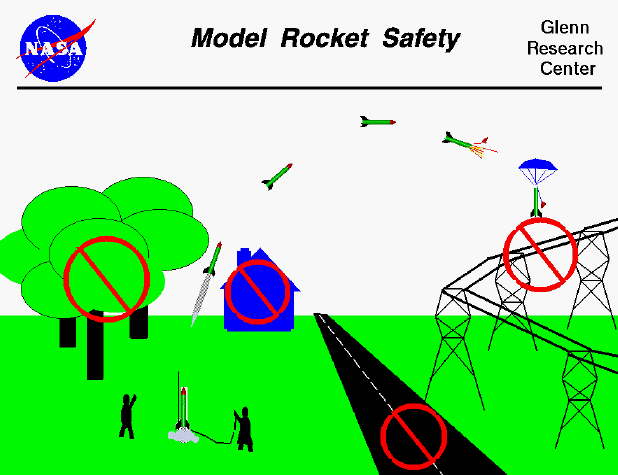
Description:
The engine motor consists of the propellant (black powder), clay nozzle which holds the igniter, the delay charge, and ejection charge.
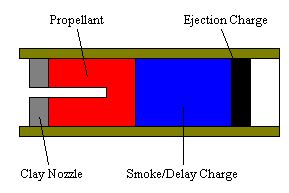
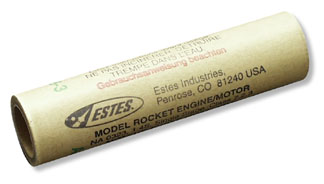
References & Links:
How Model Rocket Engines Work?
How Stuff Works - Rocket Engines
Estes Model Rockets
Water Powered Rockets